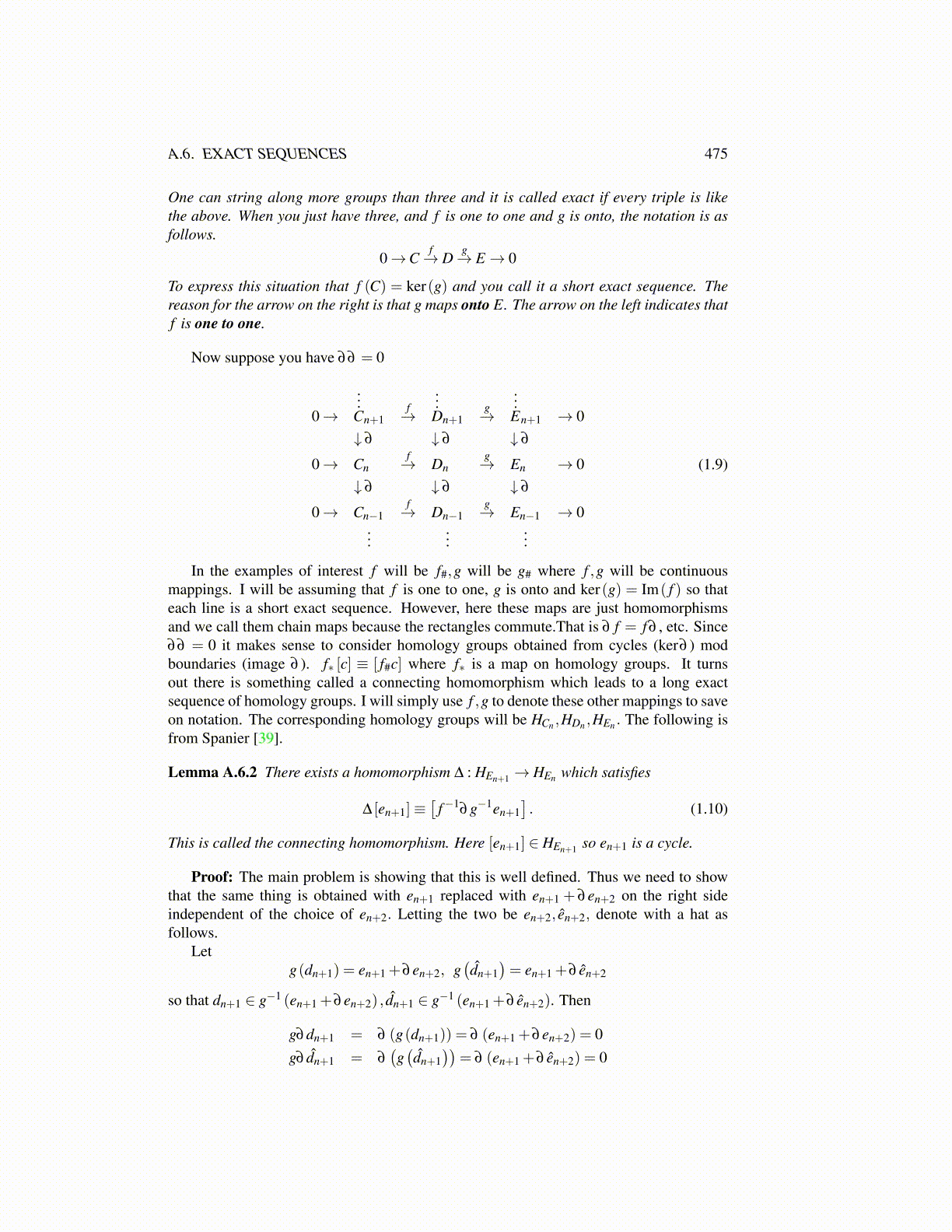
A.6. EXACT SEQUENCES 475
One can string along more groups than three and it is called exact if every triple is likethe above. When you just have three, and f is one to one and g is onto, the notation is asfollows.
0→Cf→ D
g→ E→ 0
To express this situation that f (C) = ker(g) and you call it a short exact sequence. Thereason for the arrow on the right is that g maps onto E. The arrow on the left indicates thatf is one to one.
Now suppose you have ∂∂ = 0
0→...Cn+1
f→...Dn+1
g→...En+1 → 0
↓ ∂ ↓ ∂ ↓ ∂
0→ Cnf→ Dn
g→ En → 0↓ ∂ ↓ ∂ ↓ ∂
0→ Cn−1...
f→ Dn−1...
g→ En−1...
→ 0
(1.9)
In the examples of interest f will be f#,g will be g# where f ,g will be continuousmappings. I will be assuming that f is one to one, g is onto and ker(g) = Im( f ) so thateach line is a short exact sequence. However, here these maps are just homomorphismsand we call them chain maps because the rectangles commute.That is ∂ f = f ∂ , etc. Since∂∂ = 0 it makes sense to consider homology groups obtained from cycles (ker∂ ) modboundaries (image ∂ ). f∗ [c] ≡ [ f#c] where f∗ is a map on homology groups. It turnsout there is something called a connecting homomorphism which leads to a long exactsequence of homology groups. I will simply use f ,g to denote these other mappings to saveon notation. The corresponding homology groups will be HCn ,HDn ,HEn . The following isfrom Spanier [39].
Lemma A.6.2 There exists a homomorphism ∆ : HEn+1 → HEn which satisfies
∆ [en+1]≡[
f−1∂g−1en+1
]. (1.10)
This is called the connecting homomorphism. Here [en+1] ∈ HEn+1 so en+1 is a cycle.
Proof: The main problem is showing that this is well defined. Thus we need to showthat the same thing is obtained with en+1 replaced with en+1 + ∂en+2 on the right sideindependent of the choice of en+2. Letting the two be en+2, ên+2, denote with a hat asfollows.
Letg(dn+1) = en+1 +∂en+2, g
(d̂n+1
)= en+1 +∂ ên+2
so that dn+1 ∈ g−1 (en+1 +∂en+2) , d̂n+1 ∈ g−1 (en+1 +∂ ên+2). Then
g∂dn+1 = ∂ (g(dn+1)) = ∂ (en+1 +∂en+2) = 0g∂ d̂n+1 = ∂
(g(d̂n+1
))= ∂ (en+1 +∂ ên+2) = 0